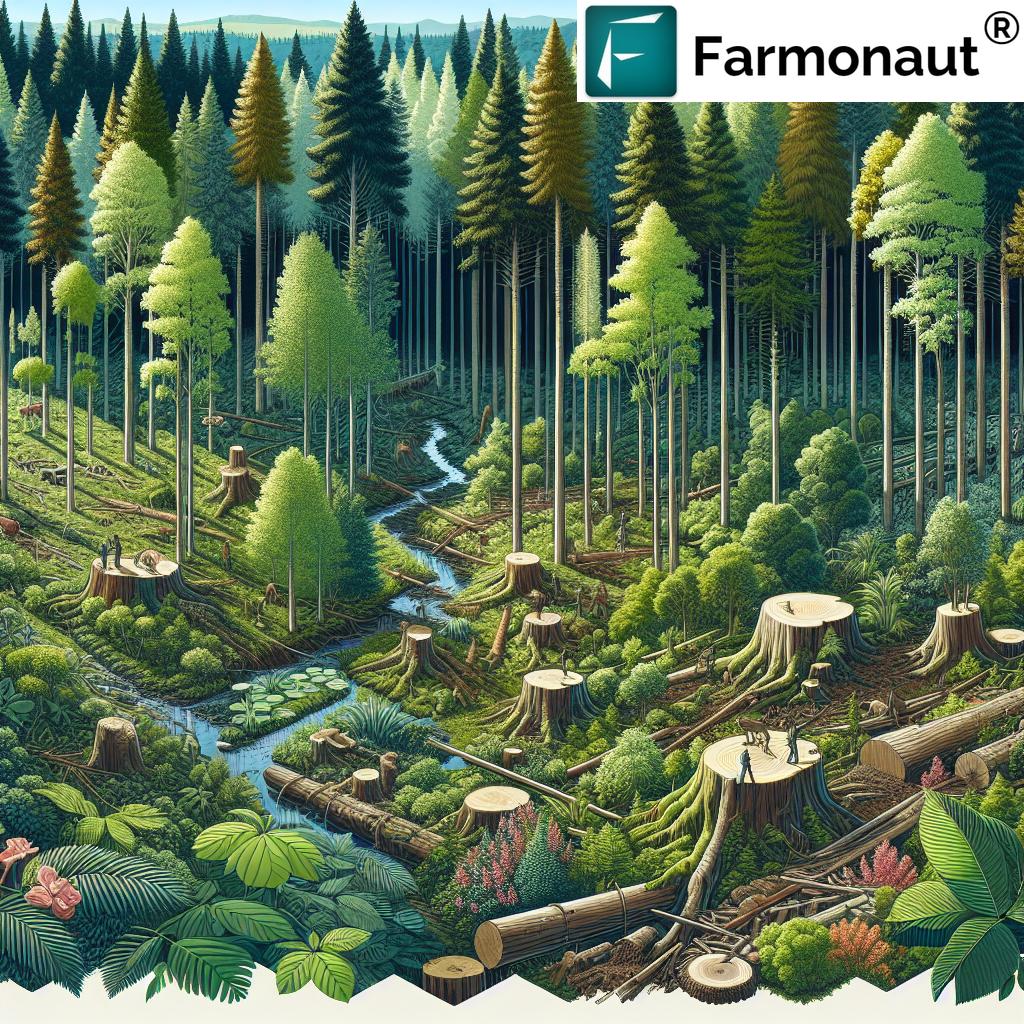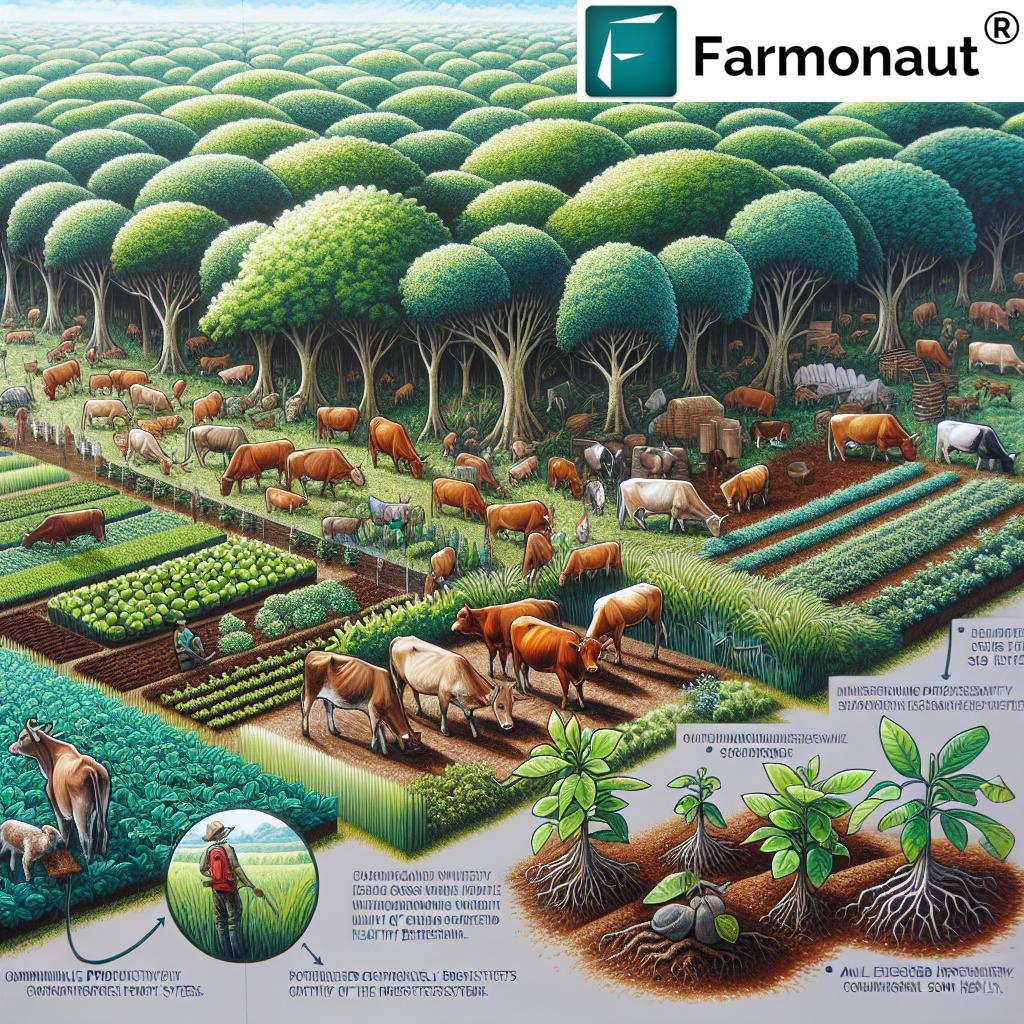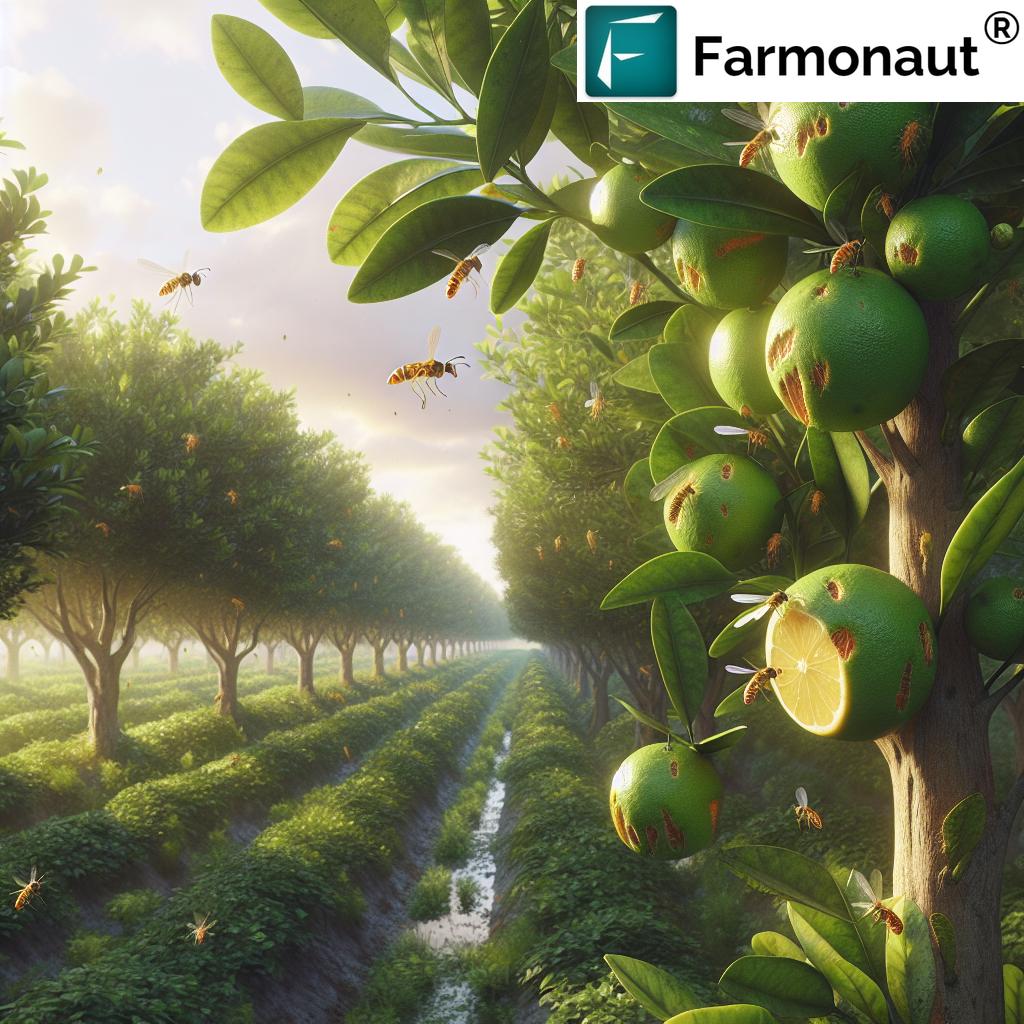Sustainable Forest Management Techniques: 7 Shocking Secrets
Sustainable forest management (SFM) stands at the forefront of our global effort to protect and enrich both the present and future generations. To truly understand what SFM involves, we must recognize it as a holistic approach aimed at maintaining and enhancing the economic, social, and environmental values of our forests — not just for us, but also for our children and their descendants.
It’s easy to think of a forest as just a collection of trees, but in reality, forests are complex ecosystems full of life, interdependence, and immense value. Our *management* of these forests must consider a suite of sustainable practices that will keep them alive, healthy, and productive for all stakeholders — from local communities to entire industries.
This blog reveals 7 shocking secrets of sustainable forest management techniques — proven strategies that significantly improve forest ecosystem health, boost forest productivity, enhance biodiversity, and reinforce community resilience. Join us as we break down these secrets, provide practical examples, and showcase how modern technologies are revolutionizing forestry across the globe, especially with the advancements of companies like Farmonaut.
Visual Guide: Images and Video Resources
Our interactive platform — available on web, Android, and iOS — empowers you to monitor forests, analyze crop health, and manage resources efficiently. Access real-time data for forest management, carbon footprint tracking, and more with Farmonaut’s Large Scale Farm Management Solution. The system is easily scalable and integrates smoothly into diverse land management operations.
7 Shocking Secrets: Sustainable Forest Management Techniques
As forests face increasing challenges like climate change, habitat loss, and land degradation, integrating cutting-edge and traditional sustainable management strategies has never been more crucial. Let’s explore the seven advanced techniques that embody the latest thinking in forestry science as well as practical innovations in the field. Each method not only preserves critical ecosystem services but also aligns with community goals and global sustainability targets.
Secret #1: Agroforestry Practices
Agroforestry integrates trees with crops or livestock on the same land, combining agricultural and forestry technologies to create more diverse, productive, and sustainable systems. This practice involves not only maintaining trees but also optimizing for health, productivity, and resilience across the entire ecosystem.
- Increased Farm Productivity: By intercropping trees with staples or animals, we boost land productivity while achieving diversified outputs such as timber, fruits, nuts, and forage.
- Enhanced Biodiversity: Agroforestry practices have been shown (especially in regions like sub-Saharan Africa) to enhance ecosystem services and support sustainable agriculture.
- Improving Soil Health in Forests: Trees in agroforestry systems add organic matter, fix nitrogen (in the case of legumes), reduce erosion, and improve water quality. This results in deeper, more resilient, and more productive soil.
- Carbon Sequestration: Integrating trees increases the land’s carbon capture potential, directly supporting forest management for carbon sequestration.
- Community & Economic Benefits: Provides resources and income opportunities for local communities.
By incorporating trees into agricultural landscapes, agroforestry offers essential environmental services: erosion control, cleaner water quality, and buffering from extreme weather events. These integrated systems not only provide multiple products, they also ensure that communities remain resilient in the face of changing conditions.
Discover how you can add satellite-based crop health monitoring to agricultural and forestry management for the best results. Farmonaut’s platform offers features that help you monitor soil moisture, vegetation health, and more, supporting sustainable forest management at every stage.
Further Reading: Agroforestry on Wikipedia
Agroforestry: Practical Example
- Planting fast-growing nitrogen-fixing trees among crop plots reduces the need for synthetic fertilizers and increases overall yield.
- Trees provide a habitat for pollinators and beneficial insects, supporting ecosystem health.
- Farmonaut’s Jeevn AI Advisory System delivers personalized tips for integrating agroforestry on your farm, from optimal tree-crop combinations to tailored irrigation and pest management advice. This advances both ecological and economic gains simultaneously.
Secret #2: Silvopasture Systems
Silvopasture is the deliberate integration of trees, forage, and livestock grazing into a mutually beneficial system. This approach is distinguished by its combination of forestry and animal husbandry to optimize productivity, stabilize landscapes, and maximize ecosystem services on the same land.
- Multiple Outputs: Silvopasture produces timber, livestock products (milk, meat, wool), and forage.
- Improved Soil Health: Trees prevent compaction, mitigate erosion, and their fallen leaves enrich soil organic matter.
- Enhanced Biodiversity: By creating a more diverse habitat, silvopasture supports a variety of plant and animal species.
- Carbon Sequestration: These systems increase carbon capture due to the biomass accumulation from both trees and forage crops.
- Economic Benefits: Provides increased farm resilience by diversifying revenue streams for farmers and local communities.
By combining trees, grazing, and forage crops, these systems create a microclimate that’s suitable for both animals and plants, reducing the stress associated with climate extremes. The result? Silvopasture practices lead to more sustainable land use, enhanced forest ecosystem health, and improved livelihoods.
To monitor your forest and graze health, Farmonaut’s Web and Mobile App can visually represent areas of over- or under-grazing, helping you implement more precise and sustainable management decisions.
Learn More: Silvopasture on Wikipedia
Silvopasture Systems: Forest Management for Carbon Sequestration
- By integrating livestock rotationally, grazing impacts can be minimized and soil compaction reduced.
- Productivity of forage can be monitored regularly with satellite-based NDVI (Normalized Difference Vegetation Index) from providers like Farmonaut, enabling timely decisions on grazing intensity and tree thinning.
Ready to measure the carbon capture and track resource efficiency of your silvopasture system? Explore Farmonaut’s Carbon Footprinting Tool for real-time tracking and actionable insights.
Secret #3: Selection Cutting Methods
Selection cutting, also known as the selection system, is a silvicultural practice involving the periodic and selective removal of individual trees or small groups to keep an uneven-aged forest structure. It’s one of the most effective strategies for forest management aiming at continuous cover, maximizing ecosystem resilience, and minimizing habitat disruption.
- Continuous Forest Cover: Maintaining a constant canopy protects the soil and offers long-term habitat stability.
- Enhanced Biodiversity: Promotes regeneration of shade-tolerant species and increases overall plant and animal diversity.
- Minimized Ecological Impact: Compared to clear-cutting, selection cutting preserves soil integrity and reduces disturbance to wildlife.
- Long-Term Productivity: Allows continuous production of timber and other forest products without sacrificing ecological balance.
We achieve more sustainable outcomes — better forest ecosystem health, improved productivity, and superior community resilience — by adopting selection cutting methods in place of traditional clear-cut approaches.
Monitor selection cutting impacts using Farmonaut’s satellite-based analytics, which can provide up-to-date imagery and AI-driven alerts on regeneration, logging, and forest canopy cover consistency.
Further Reading: Selection Cutting on Wikipedia
Continuous Forest Management: Monitoring and Advisory
- By selectively harvesting, we not only maintain long-lived tree species but also reduce the risk of soil erosion and nutrient loss.
- Farmonaut’s Jeevn AI provides tailored recommendations for harvest timing and regeneration based on real-time satellite imagery and machine learning trends, helping keep your forest resources thriving.
Secret #4: Community Based Forest Management (CBFM)
Community Based Forest Management (CBFM) is a participatory approach that actively involves local communities in the stewardship, management, and conservation of forest resources. It shifts control to those who are most invested in the longevity and productivity of forests — the people who depend on their continued vitality for their livelihoods.
- Social & Economic Benefits: CBFM creates new employment and income opportunities, boosting community resilience in rural and forest-adjacent areas.
- Enhanced Resource Stewardship: By granting access and management rights, communities are more motivated to engage in sustainable forest management and long-term planning.
- Improved Governance: Participatory management ensures that local needs are met and strengthens traditional ecological knowledge.
- Biodiversity Conservation: CBFM projects often lead to enhanced biodiversity and improved ecosystem health as local interests align with conservation efforts.
CBFM has proven effective in diverse locations, such as the Philippines, where it provides real benefits to both forests and their dependent communities. It’s a living testament to the fact that environmental and social goals can — and must — be achieved together.
Use Farmonaut’s resource monitoring tools to provide transparency and accountability in CBFM initiatives, ensuring decisions are informed and data-driven.
Reference: CBFM in the Philippines
- Benefit: Access solutions like satellite-verified crop loans and insurance to help local communities gain easier access to financial tools that underpin sustainable forest management.
Secret #5: Mycoforestry Techniques
Mycoforestry is an advanced, ecological forest management technique that leverages fungi — specifically mycorrhizal and saprotrophic species — to significantly enhance forest ecosystem health, soil structure, and regeneration. With its roots in permaculture and modern forestry science, mycoforestry represents the next frontier in sustainable management.
- Improving Soil Health: Fungi extend the root systems of trees, improving nutrient and water uptake, and rebuilding soil structure.
- Plant-Fungal Synergy: By integrating mycorrhizal fungi, mycoforestry increases tree growth rates and ecosystem resilience.
- Productivity and Economic Gains: Some fungi yield edible mushrooms, providing an additional, sustainable product for communities and improving local economic outcomes.
- Enhanced Biodiversity: Fungi support diverse plant and animal species by decomposing organic matter and facilitating nutrient cycling.
The key is to implement mycoforestry techniques within broader management plans. This involves inoculating soil, conserving decaying wood, and fostering plant-fungus associations, all while using cutting-edge monitoring systems for tracking forest health.
- Use Farmonaut’s advanced analytics to monitor rapid vegetation changes and soil moisture, which can influence fungal viability and optimize ecosystem management.
Learn more: Mycoforestry on Wikipedia
Example: Sustainable Mushrooms & Tree Growth
- Farmers supplement existing woodlots with mushroom spawn, promoting tree vigor and harvesting a lucrative edible product.
- Forest managers leave snags and woody debris, encouraging beneficial mycorrhizal growth and natural soil improvement.
Track mycoforestry impacts on your land with Farmonaut’s Digital Forest Advisory Dashboard.
Secret #6: Integrated Pest Management Forestry (IPM)
Integrated Pest Management (IPM) in forestry represents a holistic model for pest control — minimizing chemical use while actively promoting ecological balance. Properly implemented, IPM supports continuous forest health, productivity, and resilience to outbreaks.
- Biological Control: Encourages natural predators and biocontrol agents to reduce pest populations.
- Cultural Practices: Practices such as maintaining high biodiversity and healthy soil provide natural pest suppression.
- Precise Chemical Use: Chemicals are used sparingly — only when pest populations exceed damage thresholds, limiting environmental impacts.
- Continuous Monitoring: Regularly scouting and analyzing pest levels (satellite monitoring further improves this process), enables rapid, informed responses.
Implement IPM forestry using real-time data and AI-powered alerts as provided by Farmonaut Jeevn AI. Get advanced analytics for forest pest outbreaks and resource optimization tools for implementation at scale.
Further Reading: Integrated Pest Management for Forests
- Tip: Use fleet management tools from Farmonaut to organize IPM intervention logistics, reducing operational costs while ensuring efficient coverage for pest monitoring and treatment across vast tracts of forest land.
Secret #7: Satellite-Based Monitoring & Digital Tools for Forest Management
One of the most powerful advances in sustainable forest management in recent years is the use of modern digital platforms and remote sensing. By leveraging satellite imagery, AI, and resource management tools, stakeholders can ensure more accurate, efficient, and eco-friendly forestry practices, from local communities to large industries.
- Multispectral Satellite Monitoring: Access near real-time data on forest health, soil moisture, canopy cover, and other critical indicators.
- AI-based Advisory Systems: Get personalized strategies and forecasts based on up-to-date imagery, weather, and field conditions.
- Blockchain Traceability for Forest Products: Track timber, non-timber products, and supply chain data while ensuring transparency and reducing fraud (Product Traceability Solution).
- Resource Optimization: Tools for managing equipment, fleet, and logistics across farm or forest operations, maximizing efficiency and reducing costs.
- Compliance and Carbon Tracking: Support for monitoring carbon emissions and sequestration, which is especially critical in the context of carbon trading and sustainable reporting (Farmonaut’s Carbon Footprinting Tool).
With solutions like those offered by Farmonaut — available as a browser/mobile app or API for developers (API Docs) — everyone from individual farmers to governments can implement, monitor, and continuously improve sustainable forest management on any scale.
Take advantage of Farmonaut’s Large Scale Farm & Forest Management application for region-wide planning, compliance, and health tracking:
Explore the solution here.
- Also, try Farmonaut’s blockchain traceability to verify legal sourcing and ensure each product’s journey from forest to market is transparent, improving ecosystem services and consumer trust.
Comparative Benefits Table: The Seven Sustainable Forest Management Techniques
| Technique Name | Estimated Increase in Biodiversity (%) | Reduction in Soil Erosion (%) | Community Livelihood Benefit (Estimated Households Aided) | Carbon Sequestration Increase (Estimated Tons/Year) |
|---|---|---|---|---|
| Agroforestry Practices | Up to 50% | 40–70% | 500–3,000 per region | 2–7 per hectare |
| Silvopasture Systems | 35–40% | Up to 60% | 300–2,000 per region | 3–10 per hectare |
| Selection Cutting Methods | 20–30% | 20–40% | 100–700 per operation | 1–4 per hectare |
| Community Based Forest Management | 30–40% | 30–50% | 800–5,000 per region | 2–6 per hectare |
| Mycoforestry Techniques | 25–35% | 20–45% | 50–400 per practice | 1–3 per hectare |
| Integrated Pest Management (Forestry) | 20–25% | 20–35% | 150–900 per region | 1–2 per hectare |
| Satellite/Digital Forest Monitoring | Indirect: Up to 15% | Indirect: Up to 20% | Scalable: 1,000+ | Improved detection for 10–20% boost in reporting |
Note: The above estimates are based on widely reported scientific averages and may vary by region, forest type, and project scale. Implementing multiple techniques together can lead to even higher overall benefits in forest ecosystem health, soil conservation, biodiversity, and carbon sequestration.
Frequently Asked Questions: Sustainable Forest Management
What is sustainable forest management and why is it important?
Sustainable forest management (SFM) is a holistic approach that ensures forests are managed in ways that maintain and enhance their economic, social, and environmental values for present and future generations. SFM supports forest health, productivity, biodiversity, and community resilience, safeguarding resources for industries and local populations while protecting critical ecosystem services.
How do agroforestry practices support sustainable forest management?
By integrating trees, crops, and/or livestock on the same land, agroforestry practices improve soil health, control erosion, enhance biodiversity, and increase farm productivity. These systems create multiple outputs for farmers while restoring ecosystem resilience and contributing significantly to carbon sequestration.
What role do silvopasture systems play in forest management?
Silvopasture systems combine trees, forage, and controlled livestock grazing to optimize productivity, regenerate soil, boost biodiversity, and enhance ecosystem resilience. They are particularly effective in regions like sub-Saharan Africa and can help mitigate the adverse impacts of traditional livestock production.
How can digital tools and satellite technology benefit sustainable forestry?
Satellite-based forest monitoring offers timely, detailed insights into forest health, soil moisture, and land use changes. Integrating digital tools with forest management, such as Farmonaut’s web/app/API platform, enables better planning, real-time responses to threats (like pests or illegal logging), and improved management for biodiversity and carbon credits.
How can mycoforestry and IPM enhance biodiversity?
Mycoforestry introduces beneficial fungi that strengthen tree roots and break down organic matter, enhancing biodiversity from microscopic to larger species. Integrated Pest Management (IPM) uses a combination of biological, cultural, and chemical methods to minimize pest damage while protecting non-target organisms, thus preserving the rich web of forest life.
How do communities benefit from CBFM and what role does Farmonaut offer?
Community based forest management (CBFM) empowers local people to make decisions about their forests, generating livelihoods, promoting conservation, and ensuring the sustainable use of resources. Farmonaut’s tools — especially for monitoring, resource tracking, and loan/insurance verification — help increase transparency, access to finance, and effective forest stewardship for local communities.
Where can I learn more or try sustainable forest management technologies?
Start with Farmonaut’s app/web platform for real-time forest and crop monitoring. You can also explore custom solutions for carbon reporting, supply chain traceability, and large-scale project management:
Conclusion & Next Steps: Building a Resilient Forest Future
The secrets to sustainable forest management are not hidden in distant textbooks — they are actionable, evidence-based practices proven to enhance forest health, promote increased productivity, and support the livelihoods of communities. By embracing:
- Agroforestry practices and silvopasture systems
- Selection cutting methods
- Community based forest management (CBFM)
- Mycoforestry techniques
- Modern integrated pest management (IPM)
- And digital tools such as Farmonaut’s satellite-tech platform
— we can work together to secure thriving forests for both people and the planet. The integration of ecological, economic, and social considerations within these practices ensures the long-term resilience of both the ecosystems and the communities who rely on them.
Farmonaut stands ready with you, offering affordable, scalable, and accessible precision forest and farm management tools. From **real-time monitoring** to **supply chain transparency**, and **carbon tracking** for compliance, our platform is designed for sustainable growth — no matter your location, farm size, or role in the forestry industry.
Experience the future of sustainable forest management — start with Farmonaut today.
For developers: Integrate forest and farm data directly into your tools or research projects with our Farmonaut API (developer docs).
Let’s build a sustainable, productive, and resilient worldwide forestry community — together!











